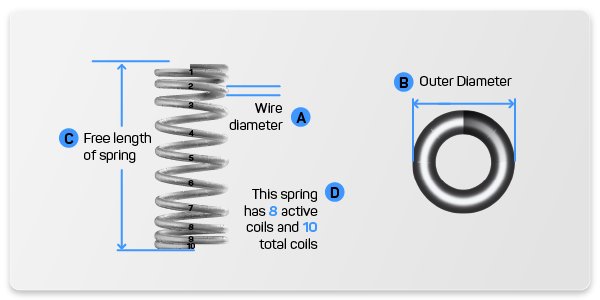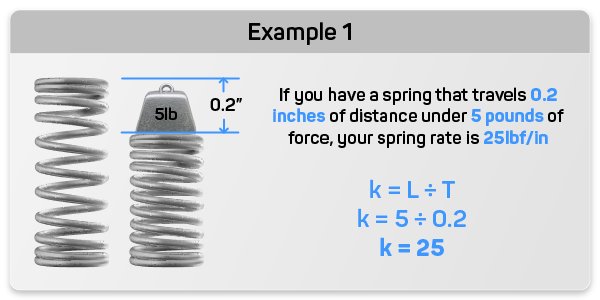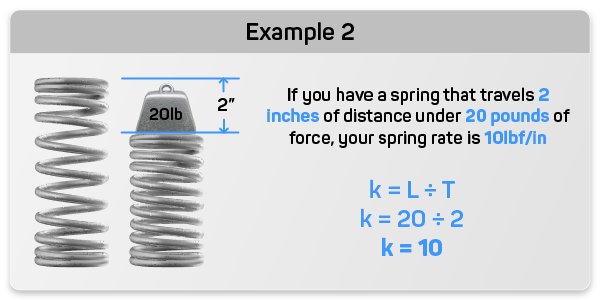







ENTER YOUR DIMENSIONS
Select Your Spring Type
COMPRESSION
EXTENSION
TORSION
Select Your Unit of Measurement
Warning Messages
Table of Content:
Compression Spring rate refers to the constant force exerted by a compression spring for each inch or millimeter of travel when subjected to an applied load. It's a crucial spring specification that helps determine whether the compression spring can meet the working loads when installed in an application. This force remains constant, with the load and travel increasing consistently. The rate is calculated based on the spring's physical dimensions, such as wire diameter, active coils, and outer diameter. Additional dimensions like inner diameter, mean diameter, and correction can also be determined using these primary dimensions.
To calculate the spring rate of a compression spring based on its physical dimensions, including the material type, you can use the following formula:
k = Gd^4 / 8D^3N
d = wire size (inches)
D = Mean Diameter (inches)
N = Number of active coils
D / d = Index correction
G = Shear Modulus of Material
k = Spring Constant
Music Wire = 11.5 x 10^6
Stainless Steel = 11.2 x 10^6
Phospher Bronze = 5.9 x 10^6
Monel = 9.6 x 10^6
Inconel = 11.5 x 10^6
Copper = 6.5 x 10^6
Beryllium Copper = 6.9 x 10^6

To calculate the spring rate necessary to meet your working loads, simply divide the load applied to the spring by the expected travel or compression distance. The formula for compression spring rate is as follows:
Rate = Load ÷ Travel k = L ÷ T
Let's illustrate this with examples:
Suppose you have a heavy-duty spring with a free length of 1 inch and it's expected to compress by 0.2 inches under a 5-pound load. To determine the compression spring rate, divide the load (5 pounds) by the travel (0.2 inches), resulting in a rate of 25 pounds of force per inch of travel.
k = L ÷ T k = 5 ÷ 0.2 k = 25 lbf/in

Consider a compression spring with a free length of 5 inches, which is expected to compress by 2 inches under a 20-pound load. Calculating the compression spring rate involves dividing the load (20 pounds) by the travel (2 inches), yielding a rate of 10 pounds of force per inch.
k = L ÷ T k = 20 ÷ 2 k = 10 lbf/in

Created by Alfonso Jaramillo J
President Acxess Spring
Over 40 Years of Experience in Spring Engineering and Manufacturing

Your 3D is being generated, 3D generation Will take approximately 15 seconds. Your 3D Will load automatically on this page.

Your 3D is being generated, 3D generation Will take approximately 15 seconds. Your 3D Will load automatically on this page.
Spring Creator is an Acxess Spring Product, You will be redirected to acxesspring.com for your purchase
Click to open acxesspring.com
